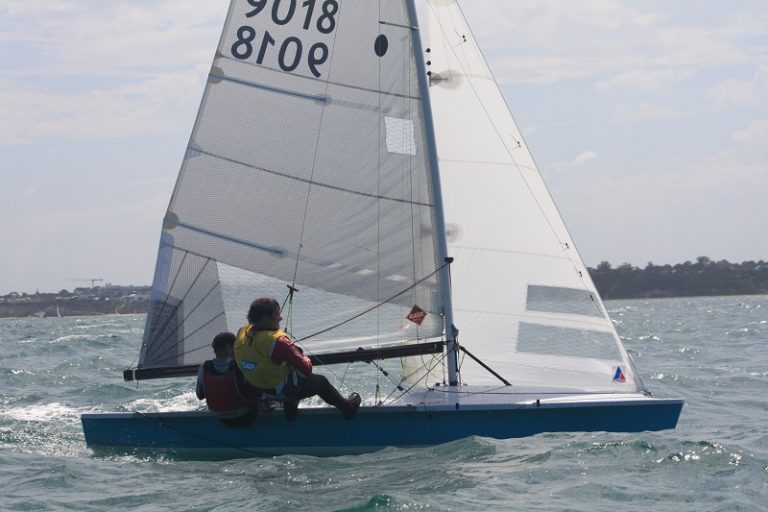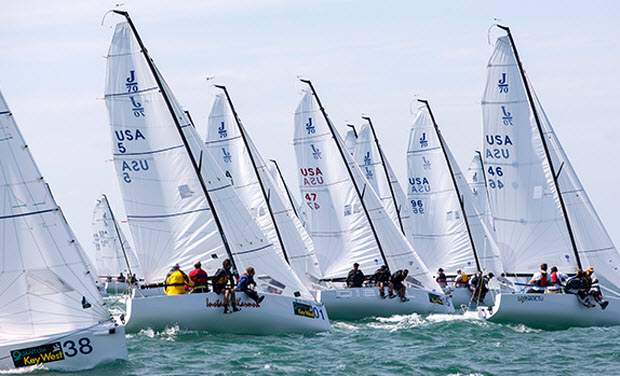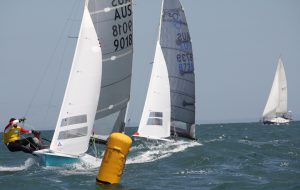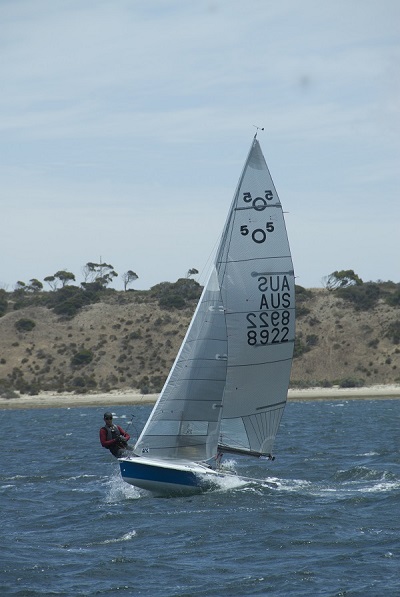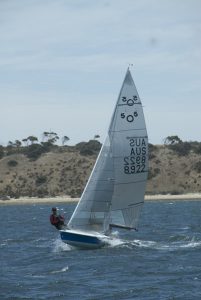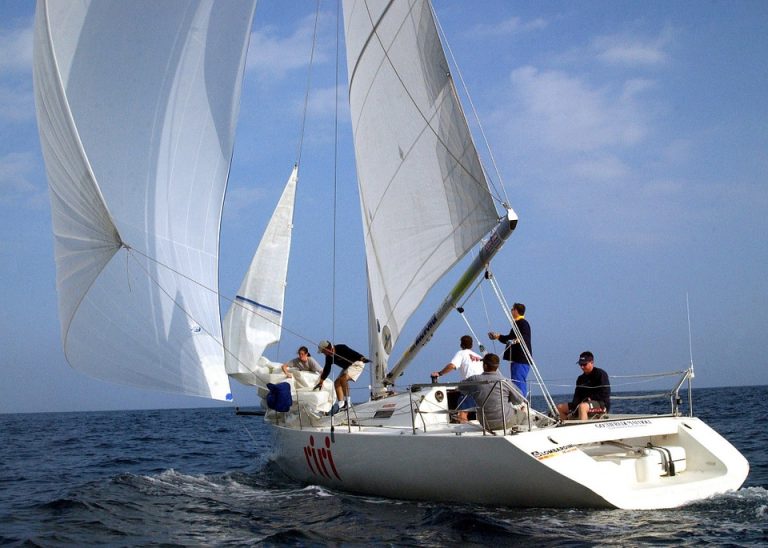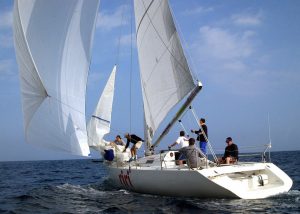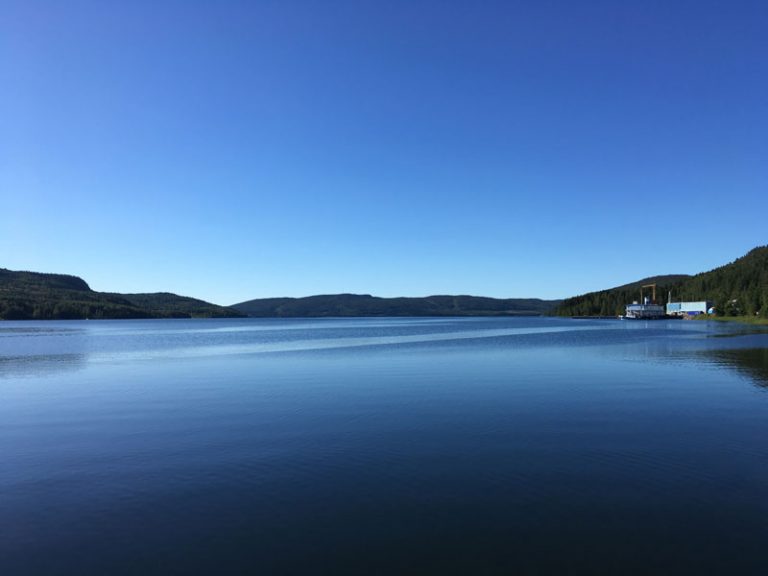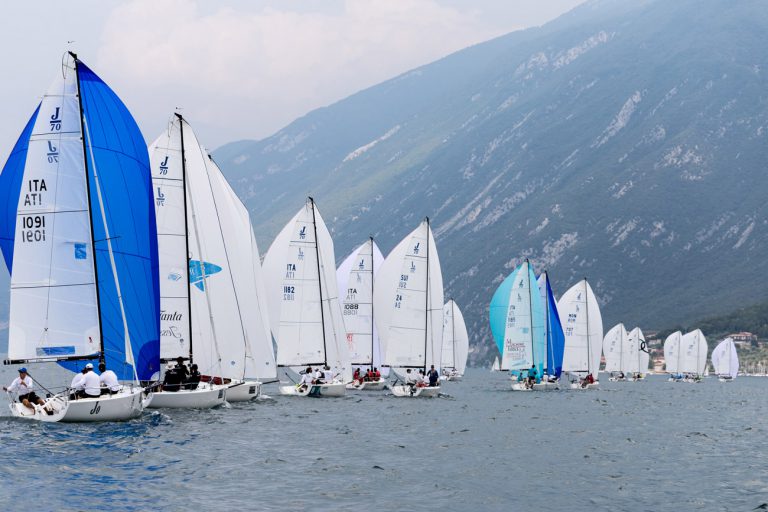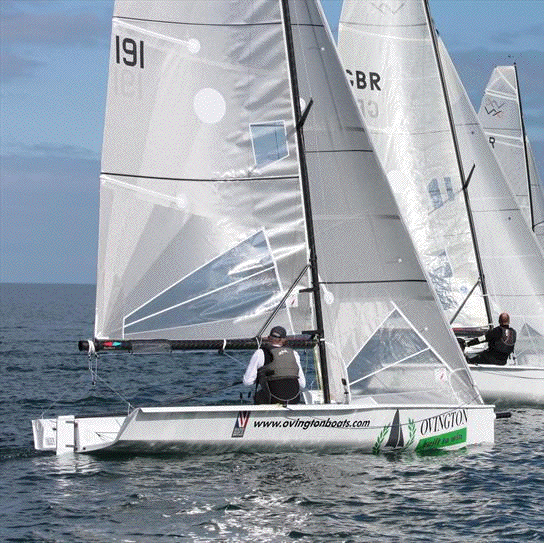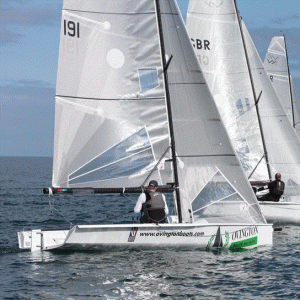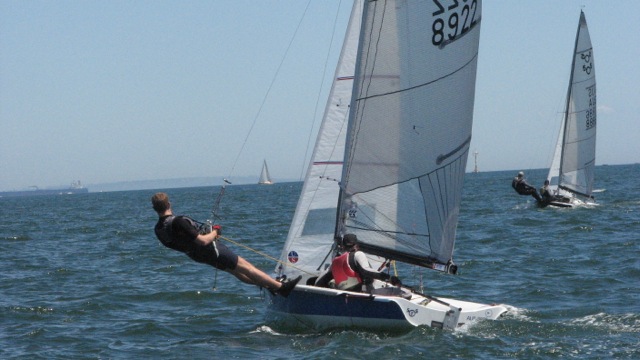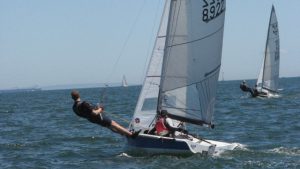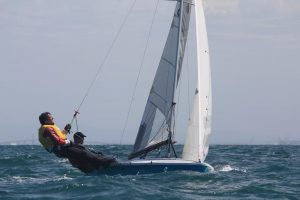
Understanding and Controlling Upwind Sail Power – Upwind sail power comes from 3 sources:
- The angle of attack.
- Depth in the sail (draft)
- Twist.
When trimming our sails we want to get our boat to full power and we must adjust for the sailing conditions by altering the three power sources listed above.
Sails are built so that they can perform in a variety of conditions but must be fine-tuned by the sail trimmer to achieve the designed shape of the sail.
The first source of power is the angle of attack.
At zero angle of attack, the sail is luffing. If the sail is luffing you need to trim in to increase power or the helmsman needs to bear off to increase power if the sail is already trimmed in as far as it can go.
Power increases as the angle of attack increases up to the point of a stall. When the angle of attack is too great, flow stalls and power drops quickly.
The second source of power is sail depth. Understanding and Controlling Upwind Sail Power
Sail depth controls the power, acceleration, and drag of the sail. More depth creates more power and better acceleration while a flatter sail has less power and less drag.
As with the angle of attack, power increases with depth up to the point where flow stalls and maximum power is achieved just short of a stall.
A flat sail is best when overpowered in heavy air and a flat shape is also fast in smooth water. That is because it creates less drag.
A deep sail is best to punch through waves and chop or to accelerate after tacking.
The twist is the third source of sail power.
Twist describes the relative trim of the sail high and low and a sail has lots of twist when the upper part of the sail is open.
Increasing twist reduces power and decreasing twist adds power.
Another reason that twist needs to be considered is that due to less surface friction, the wind is stronger at the top of the sail than at the surface and this is known as wind gradient.
The true wind and boat speed together create the apparent wind and a stronger true wind up high creates a wider apparent wind angle and stronger apparent wind the higher up the sail you go.
The sail twist is fine-tuned to match the sail shape to the prevailing wind gradient. We further fine-tune twist to wind and sea conditions.
The fine-tuning of twist is one of the most important and powerful trim adjustments.
FREE Book Download! Sailing Legends Tips
